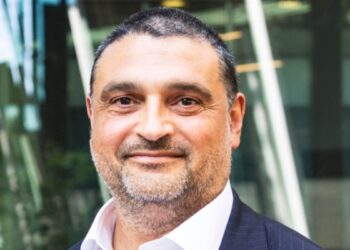In a SuperConcepts technical online update, technical executive manager Graeme Colley said that while there is a current frenzy in property prices, its important make-up in an SMSF requires closer attention to the liquidity of the fund and the various risks it imposes.
He noted payment of some super fund benefits, such as a death benefit pension, “can’t be made in bricks and mortar as the liquidity of the fund needs to be considered seriously”.
It is known to comply with the superannuation laws, all SMSFs must have an investment strategy, which is reviewed regularly, at least annually. When putting the investment strategy together, the ATO states the fund needs to consider “the liquidity of the entity’s investments, having regard to its expected cash flow requirements”.
In an example from SuperConcepts, consider the Easy Future Superannuation Fund. Its members include Harry, aged 68, who is receiving an account-based pension (ABP). The other members of the fund who are all in employment are Naomi, Harry’s spouse, age 63, and the couple’s adult children, James, aged 42, and Alicia, aged 38. The SMSF has a corporate trustee with all members as directors.
“More than half the fund is invested in a commercial property which makes it relatively illiquid. The trustees need to consider how the assets, such as the commercial property, are able to pay member benefits,” Mr Colley said.
“This would apply particularly to any death benefit lump sums which must be paid as soon as practicable after the member dies. Liquidity may not be as important if death benefit pensions are paid from the fund, as the capital supporting the pension remains in the fund.
“Harry’s benefits, held in his ABP, total $2 million. Should Harry die, assuming his ABP reverted to Naomi, the value at the time of death would count towards the transfer balance cap (TBC), but not until 12 months after Harry’s date of death.”
Mr Colley said that if at the time of Harry’s death, Naomi had not retired, she would receive the reversion from Harry’s ABP.
“However, Naomi may need to commute (convert) part of the ABP to a lump sum to ensure they don’t exceed her TBC on the anniversary of Harry’s death,” he said.
“This will still leave any lump sum from the commutation of the ABP to be paid ‘as soon as practicable’ as a lump sum death benefit to a SIS dependent.
“Based on the make-up of the SMSF’s investments, there should be enough cash (about $400,000) or investments that could be transferred to satisfy payment of the lump sum. But what if Naomi wished to receive all of the death benefit lump sum in cash?”
Further, if at the time of Harry’s death Naomi had “retired”, it could be expected that they may have used some of their TBC, Mr Colley noted.
“Again, consideration needs to be given to the amount of the death benefit, if any, could be retained within the fund and paid as a pension. Consideration needs to be given to whether Harry had a binding death benefit nomination and required that all of the death benefits be paid as a lump sum,” he said.
“The impact of the TBC means that not all of Harry’s death benefits could be retained in the fund and paid to Naomi as a death benefit pension or reversionary pension.
“Even where Naomi had full use of their TBC at the time of Harry’s death, there could still be part of their benefits that need to be paid as a lump-sum death benefit.”
With over half the fund in an illiquid property investment, Mr Colley said the challenge for the trustees is how the fund can pay the death benefit payment.
“Would it be by the sale of assets? Or via an in-specie asset transfer?” Mr Colley said.
“Contribution issues may also arise where if the death benefit is paid as a lump sum, Naomi may wish to contribute some of it back to the fund.
“The question will be, can they contribute, and if so, to what amount? Non-concessional contributions are limited by a person’s total super balance on 30 June in the previous year, their age and is capped at a dollar amount.”
Controlling the fund and review of the investment strategy
In this scenario, the trustee of the ABC Superannuation Fund is a company, with all members of the SMSF being directors of the corporate trustee. After the death of Harry, there would be three remaining directors, consisting of Naomi and the two children.
“If the corporate trustee has a standard company constitution, it would be reasonable to expect that each would have one vote at trustee meetings,” Mr Colley said.
“Consequently, you now have a situation where the partner would have the lion’s share of the value of the SMSF, but only has one vote out of the three directors of the corporate trustee. This could lead to the children outvoting Naomi on fund matters.
“It may be worth considering the options available while all members are alive to ensure that, in the event of one of them passing, control of the SMSF is vested in the member with the largest balance.
“Careful consideration should always be given to bringing adult children into the parent’s SMSF as illustrated by many court and tribunal cases.”
It’s also equally important to regularly review the fund’s investment strategy, particularly in light of changed circumstances, according to Mr Colley. A review is required at least annually when considering the liquidity risks it can present.
Mr Colley said in the event of the death of a fund member, there are a number of issues to be considered to review the fund’s investments to make sure adjustments are made to the investment strategy to ensure they are consistent.
This also includes reviewing the cash flow requirements if a death benefit lump sum or pension will be made, either as a lump sum or pension, and if an asset of the fund is a commercial property used in the business of one of the members of the fund.
“There’s no rule against the fund having illiquid assets and those assets forming a large portion of the fund,” Mr Colley said.
“However, the trustees need to consider the risk to the fund’s cash flow requirements. Consideration of liquidity risk would also be integral to the fund members’ respective individual estate plans.
“So, get out the fund’s investment strategy, review the fund’s investment portfolio, understand the estate plans of each member and consider the liquidity requirements if one of the members was to pass.”


